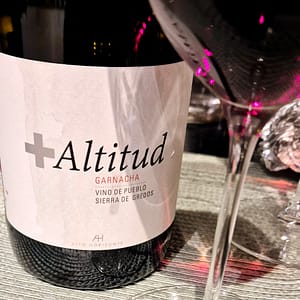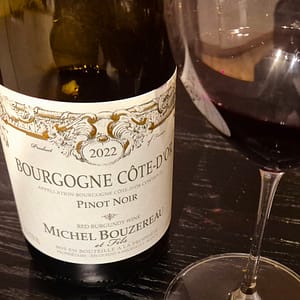Aurelio García and Micaela Rubio, both chemists and oenologists from the province of Cuenca, have expanded their winemaking efforts to include the high-altitude vineyards of the Sierra de Gredos in Ávila, particularly around the village of Navatalgordo. Here, the vineyards are situated at elevations between 1100 and 1300 meters, with granitic soils that vary in decomposition, texture, and orientation. The region’s continental mountain climate, marked by long, snowy winters and cool summers that extend into autumn, offers ideal conditions for cultivating old vines. Many of the vineyards in this area were abandoned following the Spanish Civil War and remained untouched for decades, providing Aurelio and Micaela with the opportunity to work with 80-year-old garnacha tinta vines. Their focus in Gredos is to explore the distinctive characteristics of each site, particularly how soil type and exposure influence the flavor and texture of the wines.
+Altitud is a village wine from Ávila, sourced from 40 plots located between 1100 and 1300 meters, making them some of the highest vineyards on the Iberian Peninsula. The wine is made from 98% garnacha tinta, with 2% white table grapes blended in. Each parcel is vinified separately based on soil type, and the wine is aged for 14 to 15 months in a mix of 60% concrete, 20% silica/clay, and 20% used 500-litre barrels.

+Altitud 2021 (A. García & M. Rubio)
Delicate, almost ethereal wine. Light in both colour and body. Aromas of red berries (raspberry, wild strawberry), complemented by subtle floral notes. It is aromatic, complex, and light on its feet, with a granite-derived texture and a distinctive mineral finish.
Price: Medium
Leave a Comment









